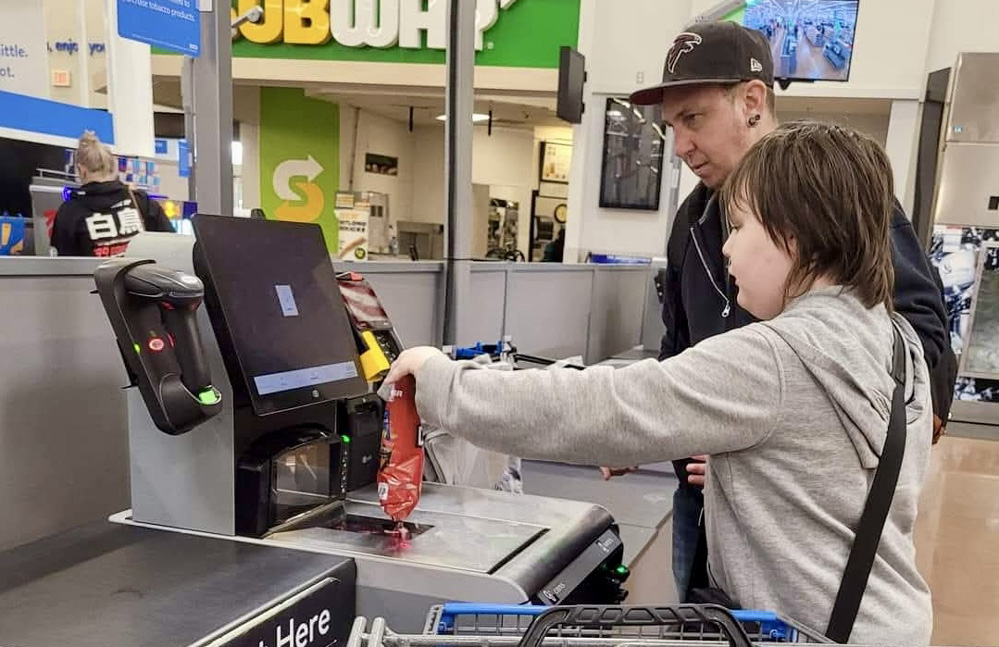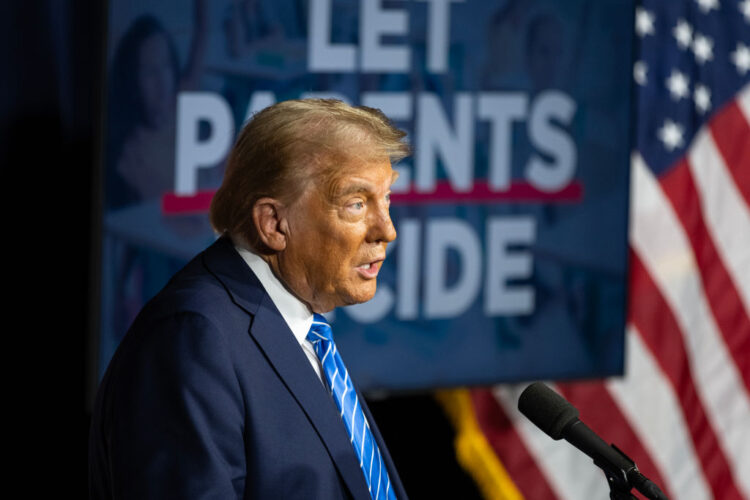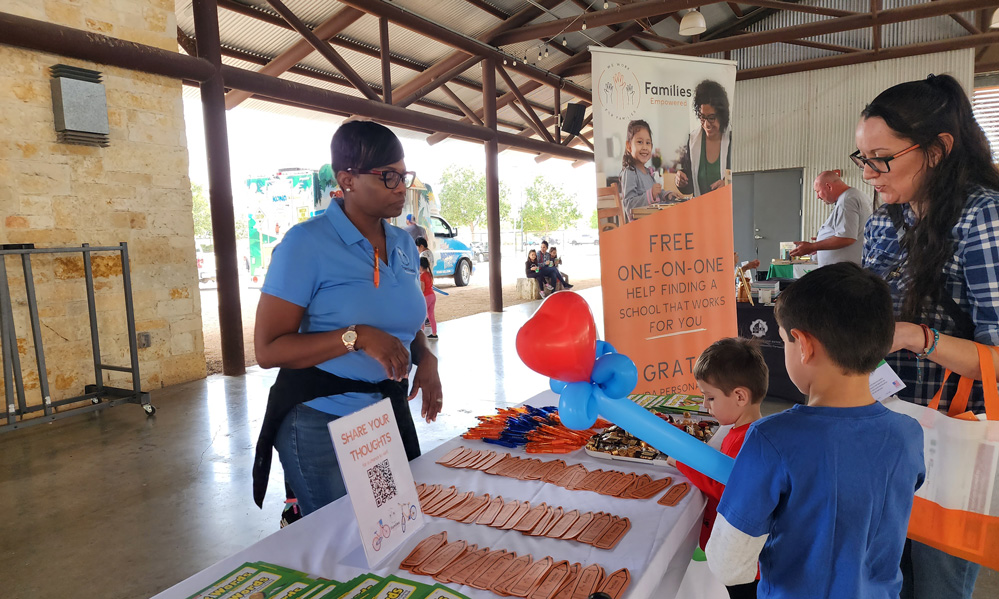This article was written and Published by Linda Jacobson — December 12, 2024
Researchers say families are often stymied by inadequate supply, transportation challenges and confusing admissions policies.

As a mom with three children who have autism, Ashley Pihlman has spent the past 10 years on a frustrating search for doctors, therapists and schools to provide the structure and support they need.Her youngest two attend the Mesa Public Schools, Arizona’s largest district. But public school wasn’t a good fit for Kain, who at nearly 11 still doesn’t speak. He needs constant supervision and requires help with tasks like handwashing and opening snacks.
The state’s education savings account, held up as a model for school choice among conservatives, allows Pihlman to spend state funds on private school tuition or homeschooling costs. But that program didn’t work for her either. Schools that accept the ESA only offered to put him on a waitlist. For now, they’re homeschooling.
“He’s not aggressive. He’s not violent. He just has high support needs,” she said. She used ESA funds for a music therapy program, but her husband had to attend class with him in case Kain tried to leave or needed to use the bathroom. “They tried their best to work with him, but they weren’t able to accommodate his needs.”

For parents like Pihlman, school choice hasn’t lived up to its promise as an alternative to traditional classrooms. With states like Texas and Tennessee aiming to pass voucher programs next year — and President-elect Donald Trump vowing to nationalize private school choice — a new paper from the Center for Reinventing Public Education focuses on the families that choice has left behind. Confusing admission policies, transportation challenges and inadequate supply means that minority students, kids from low-income families and those with disabilities often miss out.
“You can’t use choice as a solution to the quality problem,” said Ashley Jochim, the author of the study and a principal at CRPE, a think tank. “Policymakers should make it so there aren’t any really bad choices. That’s priority number one.”

Jochim examined more than 30 years of research on the competitive education landscape, from district lotteries to education savings accounts, with an eye toward challenges faced by families trying to access such programs.
She points to Milwaukee as an example of the limitations of market-based education. Home to the nation’s first private school voucher program, launched in 1990, the city has a reputation for “robust competition” between the public, private and charter sectors. But financial scandals involving charter operators and a high closure rate among private schools participating in its voucher program has sent families scrambling for other options. In a separate, forthcoming paper for Education Next, Jochim notes that between 1990 and last school year, 41% of the private schools participating permanently closed.
Overall, she said, Milwaukee families are left with a system of schools that is “quite middling.”
A recent report from the Wisconsin Policy Forum, a think tank, echoed that assessment. It shows that the city’s Black students are the least likely to attend high-performing schools. Almost three-quarters of Black students in grades three through eight, in both district and charter schools, score below grade level in math, compared with 29% of white students and 59% of Hispanic students.
But national data tells a more promising story. A 2023 report from Stanford University’s Center for Research on Education Outcomes concluded that on average, charter students — including Black, Hispanic and poor students — perform better than their peers in traditional schools.
To Karega Rausch, the president and CEO of the National Association of Charter School Authorizers, CRPE’s report means two things can be true at the same time: Charters have improved outcomes for poor and minority students and there are still “real barriers” to increasing the number of high-quality schools.
A recently passed law in Idaho meant to encourage innovative school models and efforts to extend credit to Colorado charters waiting on federal grant funds are examples of policies that can help meet the demand, he said.
‘High-cost mistakes’
But the momentum building around private school choice demonstrates that parents can sometimes get lost in an abundance of options, Jochim wrote.
Florida, for example, added 1,700 private schools to its voucher program between 2010 and 2020, and Arizona families using an ESA can choose from thousands of vendors, including private schools, tutors, and sports or arts programs.
“Navigating this rapidly evolving landscape without reliable information increases the risks that families will make high-cost mistakes,” Jochim wrote. “The search for a ‘good’ school can be time consuming, and when the chosen school disappoints, families must begin their search again.”
Families whose children have disabilities often end up in a “holding pattern,” said Lauren Morando Rhim, executive director of the Center for Learner Equity, which focuses on ensuring that students with disabilities receive needed services from charters.
“I’ve spoken to parents who said ‘I tried a district school and they couldn’t serve my child. I tried a charter — they couldn’t serve my child,’ ” she said. Out of “desperation,” they sometimes turn to an ESA-funded private school, but that often means their children won’t be able to interact with non-disabled peers. “They say, ‘I’m not happy about it, but it’s the least bad option right now.’ ”
Jochim supports choice “as a means to introduce some competition and improve all schools,” but thinks that for its most passionate advocates, it has become “a value unto itself.” She recommends that states collect data on students who exit school choice programs to get a fuller understanding of what is driving turnover.
She also urges policymakers and foundations to fund what school choice experts call “navigators” —those who can help families evaluate options, stay ahead of key deadlines and go into the process more informed.
‘People trust people’
That’s the work that Colleen Dippel, of Houston-based Families Empowered, has been doing for 15 years. Even with public school choice, she said parents remain confused about how lotteries and magnet schools work. And with Texas likely to pass a voucher bill next year, families are looking at even more options.
With ESAs also come multimillion-dollar state contracts for payment systems, websites and online vendors marketing supplies and curriculum. Dippel said that parents benefit from having someone to field their questions.
“We have underinvested in people in the school choice space and overinvested in technology,” she said. “People trust people, not institutions.”

Funded largely by donations, Families Empowered is neutral about which models work best, she said, and might steer a family toward a traditional school if its a better fit. She once lost a funder because she wouldn’t agree to direct families to IDEA Public Schools, a large charter network with over 100 schools in Texas.
She also hopes that Texas learns from other states about how to ensure families can use the programs without having to spend their own money and wait for reimbursement.
“That would be very concerning for us,” she said. “We believe that’s a barrier that does not need to be in place for low-income families.”
Families using ESAs often wait months to get paid back or say they have to jump through bureaucratic hoops to get approval for purchases. In Arizona, Pihlman uses an ESA debit card to buy books, Legos, puzzles and other supplies for Kain, who is just beginning to write. But she worries that months later, state officials will deny a purchase and she’ll have to pay it back.
Some ESA proponents argue those obstacles aren’t a mark against school choice — just evidence of birthing pains as states explore new options.
During the pandemic, Kevin Gemeroy relocated to Scottsdale, Arizona, from Seattle, where in-person school wasn’t an option. He uses the state’s ESA program to send his oldest son, a bright student with dyslexia, to a private school, but is considering public school for his youngest.
“Having a system where you can choose between public school, private school, homeschool, religious school — and be able to use your lifetime of education tax dollars — is a huge advantage,” he said. “Just because some people have problems using the resources available or some people are abusing them doesn’t mean that the other 98% of people that aren’t should have their options limited.”